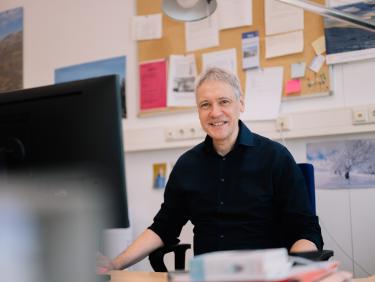Prof. Dr. Lucas Menzel
Professor of Hydrogeography and Climatology at the Institute of Geography at Heidelberg University, HCE member since 2011.
In my work, I focus on water and energy fluxes in the transitional zone between soil, vegetation, and the atmosphere. One of the main areas of my research is the determination of land surface evaporation (evapotranspiration). As the climate changes, the controlling factors of evapotranspiration also shift, which in turn strongly influences the distribution of heat fluxes. For example, under conditions of water scarcity and reduced evaporation, sensible heat flux becomes more significant—this, in turn, drives air temperature in the near-surface atmospheric boundary layer.
Another key focus of my work is the development and application of hydrological models. Based on our own field experiments, these models allow us to simulate hydro-climatic processes and dynamics on a larger spatial scale, such as:
- Soil moisture and groundwater recharge
- The spatial and temporal development of the snow cover, particularly in the context of climate change
- More generally, the availability of water in different natural environments and the assessment of water scarcity
My research projects are based both in southwestern Germany and in various regions around the world, particularly in semi-arid areas (Middle East, Mongolia).

Why I joined the HCE
Back when the HCE was founded, there was a highly motivating spirit of new beginnings. It became clear that many colleagues at our university were interested in transdisciplinary collaboration on challenging topics in environmental research, and that there was a critical mass to support such cooperation. This has proven true to this day and remains a source of motivation for the future.
My Highlights so far
This includes our project on the role of nitrous oxide in the environment, conducted together with Frank Keppler (project lead, Geosciences), Steffen Greiner (COS), and Martina Schmidt (Environmental Physics). Under very challenging conditions during the first onset of winter in the Khentii Mountains of Mongolia, we collected soil air samples and transported them on foot and by horse. The samples were later successfully analyzed in Frank Keppler's lab. Interestingly, the soils sampled — some of which contained thawing permafrost — did not emit nitrous oxide. However, carbon dioxide and methane were detected.
My key partners
Despite the interdisciplinary nature of the HCE, genuine collaborations have so far primarily emerged in the fields of geosciences and environmental physics. I look to the future with optimism and look forward to further collaborations!